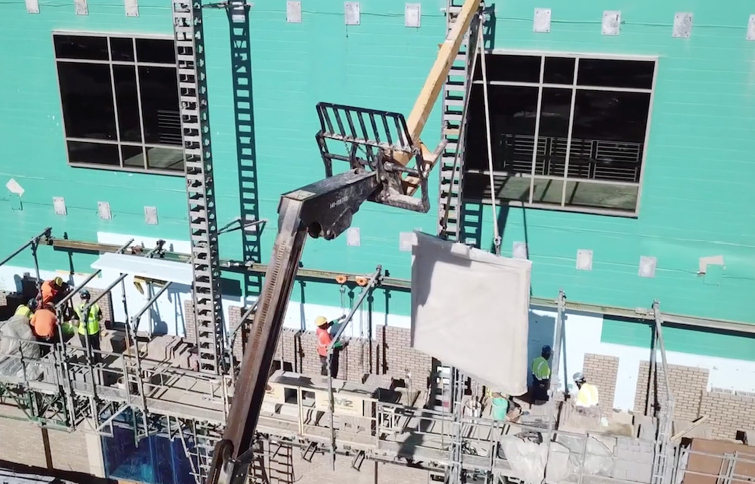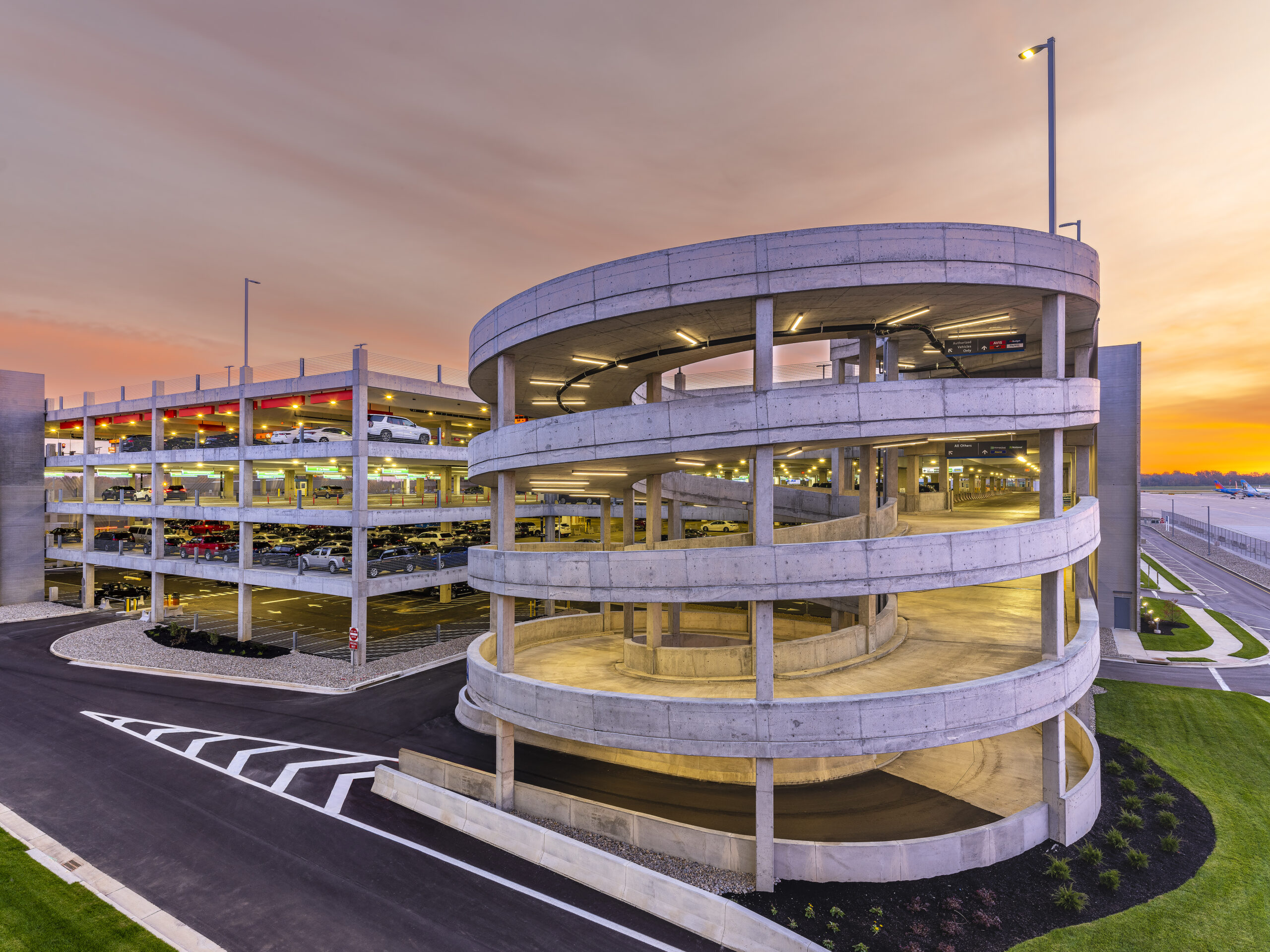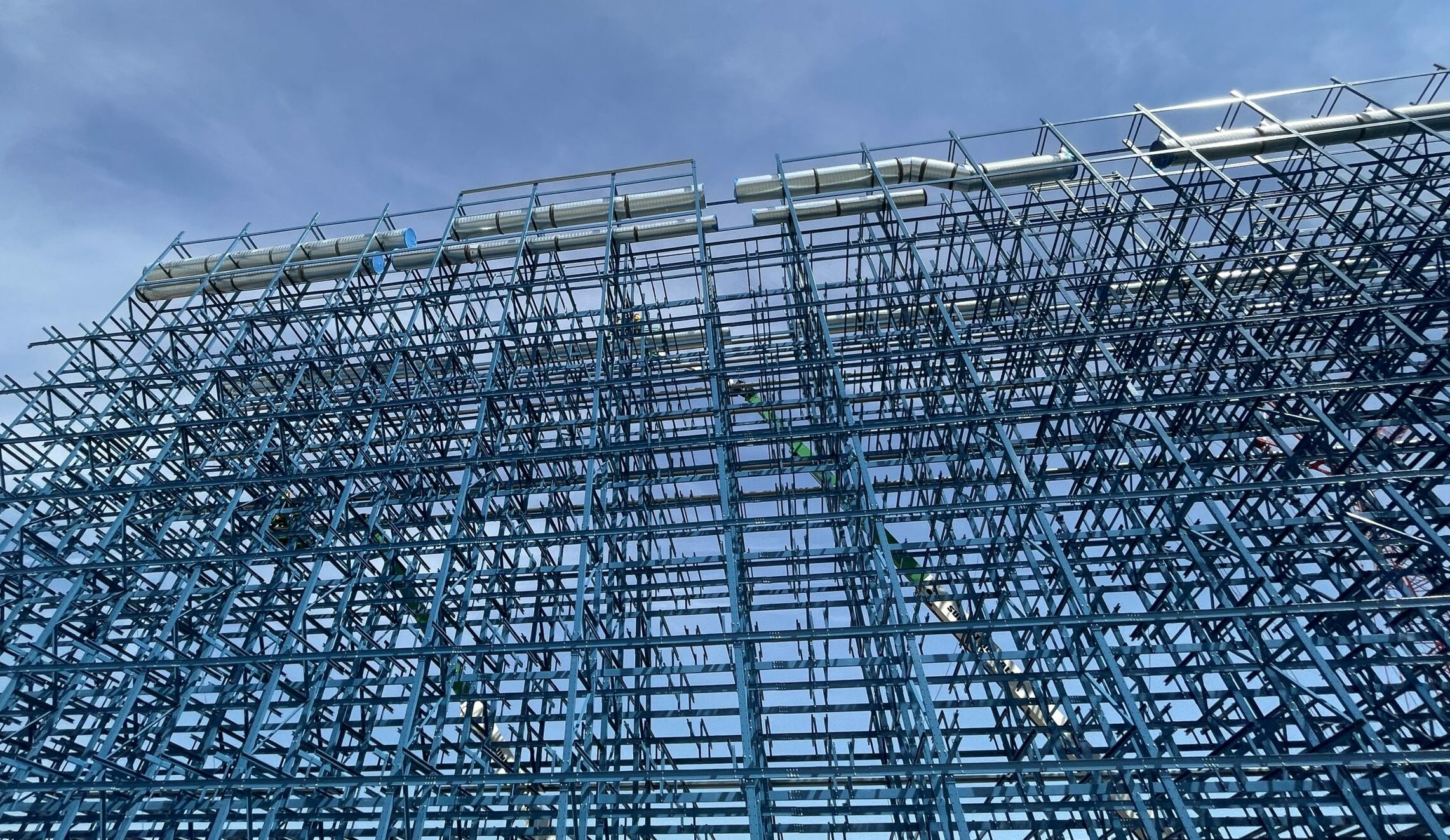Technology and Teamwork Yield a Positive Result for the Xavier HUB
November 1, 2019

Sometimes positive + negative = positive. That’s what Matt Mintus, Project Solutions Coordinator in Messer’s Operations Technology Solutions (OTS) department, discovered when he jumped in to work through some façade challenges at the Xavier University Health United Building (HUB) in Cincinnati.
The building’s architect, MSA Design, envisioned a series of sports-themed concrete medallions adorning the HUB’s exterior. The only thing the project team had to start with were conceptual drawings in a PDF. Bringing them to life required technology and teamwork over the course of about eight months.
“These medallions are a staple piece of this building, which is highly visible on campus,” Mintus said. “The OTS department prides itself in specializing in the most up-to-date processes and technology, and we’re excited that we could deliver a solution that the owner is very happy with. The biggest win is that the graphic artist’s design touched three different companies and the final product stayed very close to the original intent.”
To start, a graphic artist was commissioned to generate 3D models of the original drawings using a program called ZBrush. However, the machinery at the precast concrete vendor (Reading Rock, Inc.) couldn’t handle the 3D models’ complex geometry.
That’s when Messer Senior Project Executive Matt Poland reached out to OTS. "I knew they'd be the right group to find a solution. Messer's in-house technology experts are passionate problem-solvers," Poland said.
Mintus immediately thought of ANZA, Inc., a rapid prototyping vendor with which he’d collaborated on a prior 3D printing project.
“After seeing ANZA’s methods and processes, I was confident they’d be able to create something that Reading Rock could use to make the molds,” Mintus said. “They are very familiar with taking 3D-generated models and turning them into full production pieces.”
ANZA’s machinery was capable of creating the medallions’ intricate curvatures exactly as the artist intended. Still, the model had to be broken up into several different pieces and machined out using a urethane that is close in property to wood. The various pieces were glued together on a base, and then sanded, primed and painted to look like one continuous piece—the first “positive” versions of the medallions.
“We were really impressed with their craftsmanship,” Mintus said. “Being able to translate the artist’s work using complicated machinery was pretty unique.”
Next, Reading Rock took the positives and cast them with a rubber-like urethane to create the “negative” molds that were then filled with concrete to cast the final “positive” medallions. Xavier University captured this part of the process in this article.
Because of the 6-foot, 8-inch medallions’ relatively thin design and 2,100-pound weight, Reading Rock engineered brackets into each piece so they could be lifted and affixed to the exterior skin of the building. All 13 medallions are being installed this fall, and the HUB will be turned over to students in January after their winter break.
“It’s really gratifying to watch the medallions being installed for generations of students to see,” Mintus said. “It’s a culmination of all our efforts: our craftforce and operations team, the designers and the manufacturers. MSA and Xavier understood the complexities of these medallions, and they were great to work with.”
As an added bonus, Mintus gets to share this experience with his daughter, who has an interest in architecture and engineering. Not only will her high school graduation be held on Xavier’s campus, but she actually worked with ANZA for a month this summer helping sand the medallions.
To see the medallions move from ANZA to Reading Rock to Xavier’s campus, watch this compilation video.


